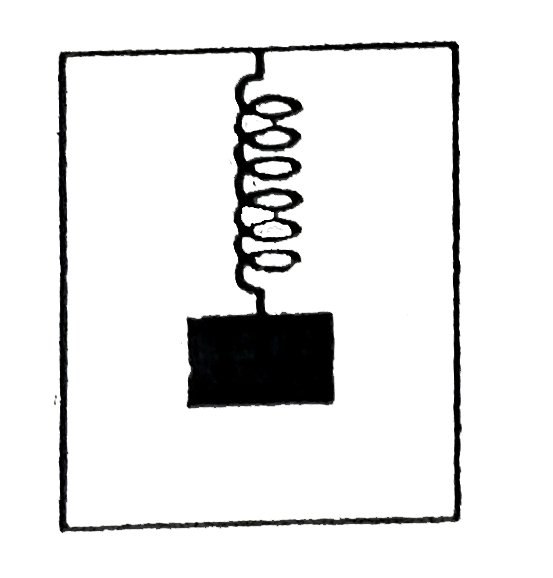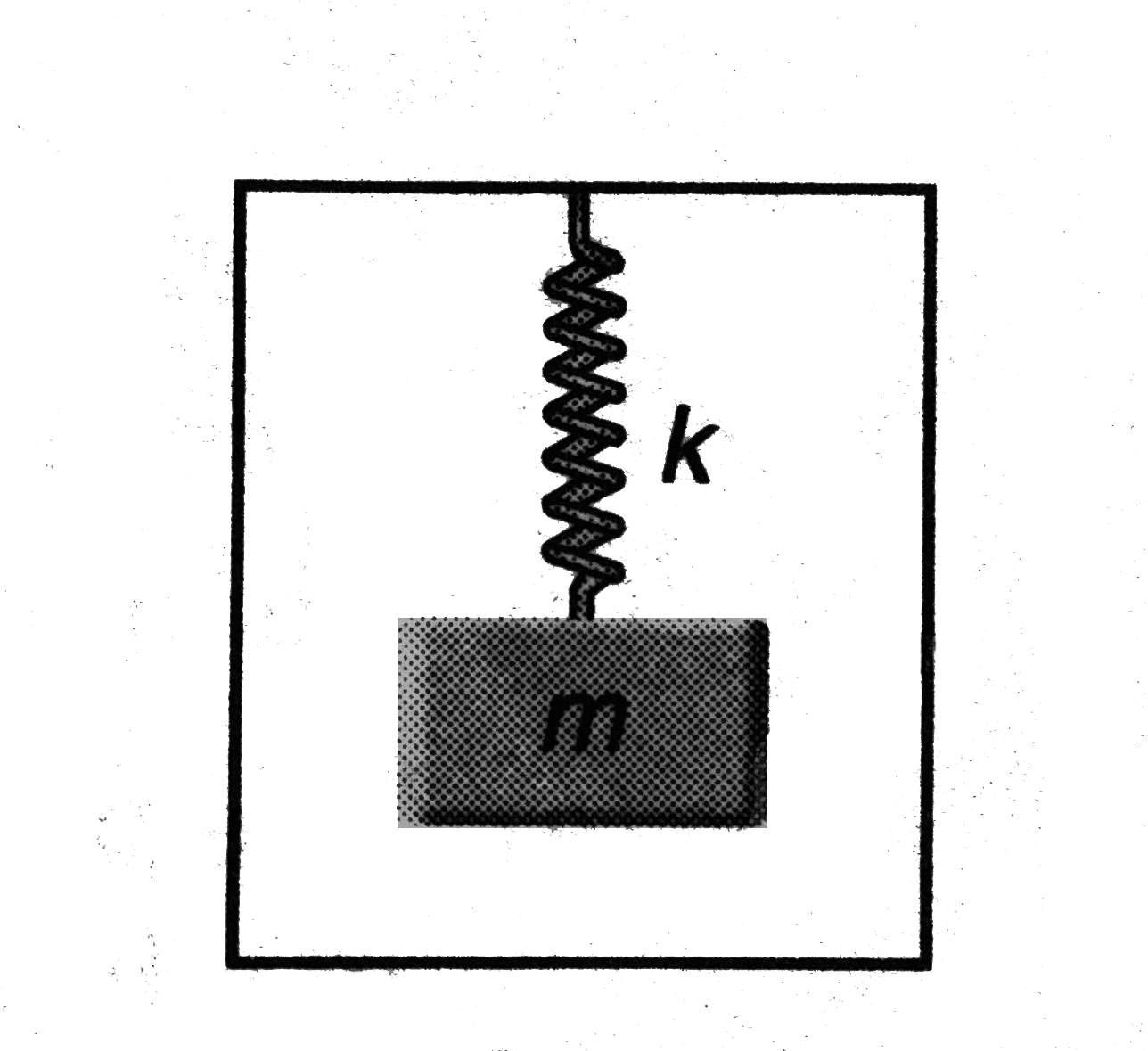A barometer kept in a stationary elevator reads 76cm. If the element starts accelerating up the reading will be
Zero
Equal to 76cm
More than 76cm
Less than 76cm
The correct Answer is:D
To solve the problem of how the reading of a barometer changes when an elevator accelerates upwards, we can follow these steps:
1. Understanding the Initial Condition:
- The barometer reads 76 cm of mercury when the elevator is stationary. This reading corresponds to the atmospheric pressure at that location.
2. Effect of Upward Acceleration:
- When the elevator starts to accelerate upwards, the effective gravitational acceleration experienced by the barometer increases. This is because the barometer measures the pressure exerted by the column of mercury, which is influenced by both the gravitational pull and the upward acceleration of the elevator.
3. Calculating Effective Acceleration:
- Let g be the acceleration due to gravity (approximately 9.81m/s2).
- Let a be the upward acceleration of the elevator.
- The effective gravitational acceleration geffective when the elevator accelerates upwards is given by:
geffective=g+a
4. Pressure Relation:
- The pressure exerted by a column of liquid is given by the formula:
P=ρgh
- Where P is the pressure, ρ is the density of the liquid (mercury in this case), g is the acceleration due to gravity, and h is the height of the liquid column.
5. Finding the New Height:
- When the elevator accelerates upwards, the pressure exerted by the mercury column must balance the atmospheric pressure. Therefore, we can set up the equation:
Patm=ρgeffectiveh′
- Where h′ is the new height of the mercury column when the elevator is accelerating.
- Rearranging gives:
h′=Patmρgeffective
6. Comparing Heights:
- Since geffective=g+a, we can see that as geffective increases, h′ will decrease because h′ is inversely proportional to geffective.
- Thus, the new height h′ will be less than the original height of 76 cm.
7. Conclusion:
- Therefore, when the elevator accelerates upwards, the reading of the barometer will decrease from 76 cm.
Final Answer:
The reading of the barometer will be less than 76 cm when the elevator accelerates upwards.
- The barometer reads 76 cm of mercury when the elevator is stationary. This reading corresponds to the atmospheric pressure at that location.
- When the elevator starts to accelerate upwards, the effective gravitational acceleration experienced by the barometer increases. This is because the barometer measures the pressure exerted by the column of mercury, which is influenced by both the gravitational pull and the upward acceleration of the elevator.
- Let g be the acceleration due to gravity (approximately 9.81m/s2).
- Let a be the upward acceleration of the elevator.
- The effective gravitational acceleration geffective when the elevator accelerates upwards is given by:
geffective=g+a
- The pressure exerted by a column of liquid is given by the formula:
P=ρgh
- Where P is the pressure, ρ is the density of the liquid (mercury in this case), g is the acceleration due to gravity, and h is the height of the liquid column.
- When the elevator accelerates upwards, the pressure exerted by the mercury column must balance the atmospheric pressure. Therefore, we can set up the equation:
Patm=ρgeffectiveh′
- Where h′ is the new height of the mercury column when the elevator is accelerating.
- Rearranging gives:
h′=Patmρgeffective
- Since geffective=g+a, we can see that as geffective increases, h′ will decrease because h′ is inversely proportional to geffective.
- Thus, the new height h′ will be less than the original height of 76 cm.
- Therefore, when the elevator accelerates upwards, the reading of the barometer will decrease from 76 cm.
The reading of the barometer will be less than 76 cm when the elevator accelerates upwards.
Topper's Solved these Questions
- BOOK - ERRORLESS CHAPTER - FLUID MECHANICSEXERCISE - Pascal s Law and Archmidies Principle27videos
FLUID MECHANICS
- BOOK - ERRORLESS CHAPTER - FLUID MECHANICSEXERCISE - Fluid Laq66videos
FLUID MECHANICS
- BOOK - ERRORLESS CHAPTER - ELASTICITYEXERCISE - Self Evaluation Test11videos
ELASTICITY
- BOOK - ERRORLESS CHAPTER - FRICTIONEXERCISE - MCQ S125videos
FRICTION
Similar Questions
A barometer kept in an elevator accelerating upwards reads 76 cm of Hg. If the elevator is accelerating upwards at 4.9ms−2 , what will be the air pressure in the elevator?
View SolutionA barometer kept in an alevator ac celerating upward reads 76 cm of mrecury. If the elevator is ac celerating upwards at 4.5ms−2 find the air pressure in the elevator in cm of mercury. Density of mercuty =13.6×103kgm−3G=9.8m/s2
View Solution
Knowledge Check
- Question 1 - Select One or More
A spring mass system is hanging from the ceiling of an elevator in equilibrium. The elevator suddenly starts accelerating upwards with acceleration a, consider all the options in the reference frame of elevator.
 Athe frequency of oscillation is 12π√kmBthe amplitude of the resulting SHM is (mak)Camplitude of resulting SHM is (mg+akDmaximum speed of block during oscillation is (√mk)a
Athe frequency of oscillation is 12π√kmBthe amplitude of the resulting SHM is (mak)Camplitude of resulting SHM is (mg+akDmaximum speed of block during oscillation is (√mk)a - Question 2 - Select One
A barometer kept in a lift reads 11 cm of mercury, when the lift is stationary. Then the lift starts moving down with an acceleration a, where a lt g. What is the air pressure in the lift, as read by the barometer ?
AρghBρ(g+a)Cρ(g−a)Dρgha - Question 3 - Select One
A spring balance is attached to the ceiling of a lift. A man hangs his bag on the spring and the spring reads 49N, when the lift is stationary. If the lift moves downward with an acceleration of 5m/22, the reading of the spring balance will be
A(a) 24NB(b) 74NC(c) 15ND(d) 49N
A barometer kept in an elevator reads 76 cm when it is at rest. If the elevator goes up with increasing speed, the reading will be
View SolutionA barometer kept in an elevator accelerating upward reads 76 cm. The air pressure in the elevator is
View SolutionA spring mass system is hanging from the celling of an elevator in equilibrium. The elevator suddenly starts accelerating upwards with acceleration a. Find

(a) the frequency and
(b) the amplitude of the resulting SHM.View SolutionAn elevator is accelerating downwards with an acceleration of 4.9 ms−2. A barometer placed in this elevator reads 75 cm of Hg. Calculate the air pressure inside the elevator.
View SolutionA block of mass m kg is kept on a weighing machine in an elevator. If the elevator is retarding upward by a ms−2, the reading of weighing machine is (in kgf)
View Solution

